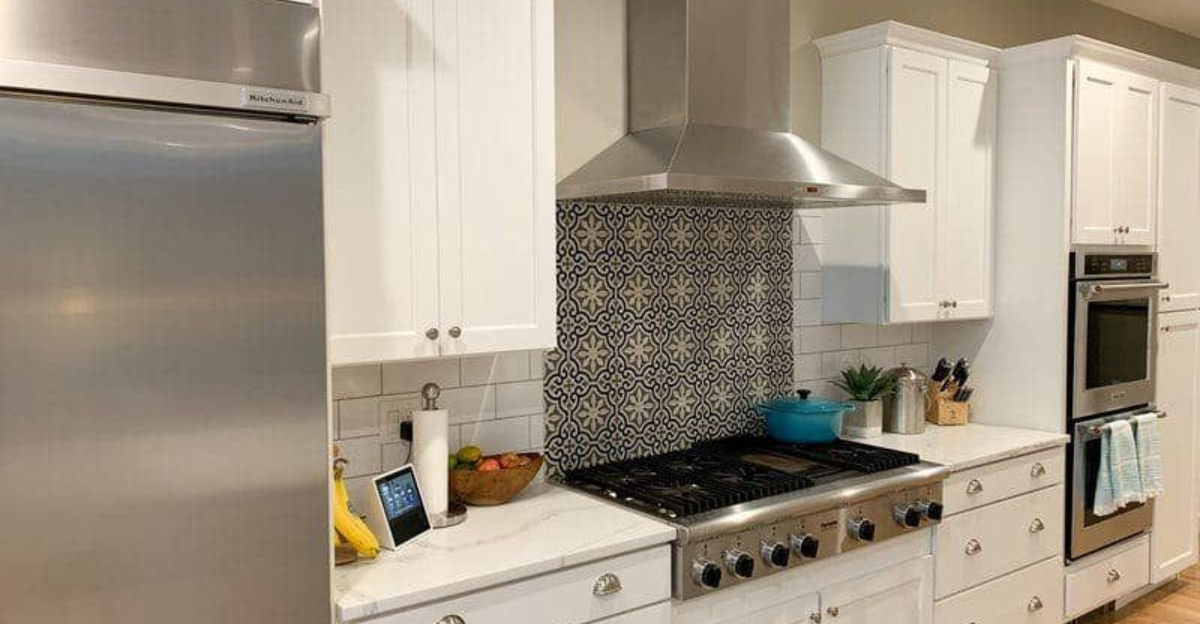Your kitchen may harbor hidden dangers that go unnoticed. Poor design choices and unsafe habits increase the risk of accidents, injuries, and fires during meal prep.
Common pitfalls often include overlooked safety details, faulty layouts, and cluttered spaces that compromise function and security. Identifying and addressing these issues can transform the kitchen into a safer, more efficient environment for daily use.
1. Poor Ventilation Planning
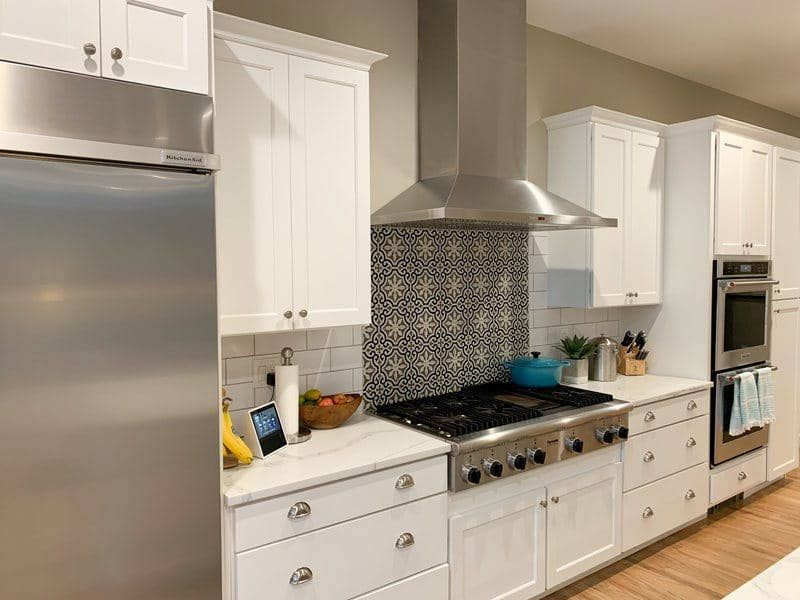
Cooking without proper airflow creates a silent health hazard in your home. Smoke, grease particles, and carbon monoxide can build up, causing respiratory issues over time.
Many homeowners underestimate ventilation needs when designing kitchens. A properly sized range hood should extend beyond your cooktop and vent outdoors rather than simply recirculating filtered air.
2. Inadequate Task Lighting

Working with sharp knives in shadowy conditions is a recipe for disaster! Dim lighting increases your chances of cutting yourself or misreading measurements for recipes.
Surprisingly, many kitchens rely solely on overhead lighting that casts shadows exactly where you’re working. Under-cabinet lights, pendant fixtures above islands, and adjustable task lamps eliminate dangerous dark spots.
3. Skipping Outlet Placement Near Counters

Stretching cords across workspace creates trip hazards and electrical dangers that could have been easily avoided. When cords dangle near sinks or stovetops, the risk multiplies exponentially.
Smart kitchen design includes outlets every few feet along backsplashes. Pop-up outlets embedded in countertops or islands offer convenient power without permanent cord clutter crossing your work zones.
4. Ignoring the Work Triangle Rule

Rushing between widely separated cooking zones increases collision risks when carrying hot items. The classic kitchen work triangle connects your sink, refrigerator, and stove in an efficient pattern.
When these key areas are too far apart, you waste energy and create opportunities for accidents. Measuring 4-9 feet between each point creates an ideal balance of efficiency and safety during meal preparation.
5. Placing the Stove Too Close to the Fridge
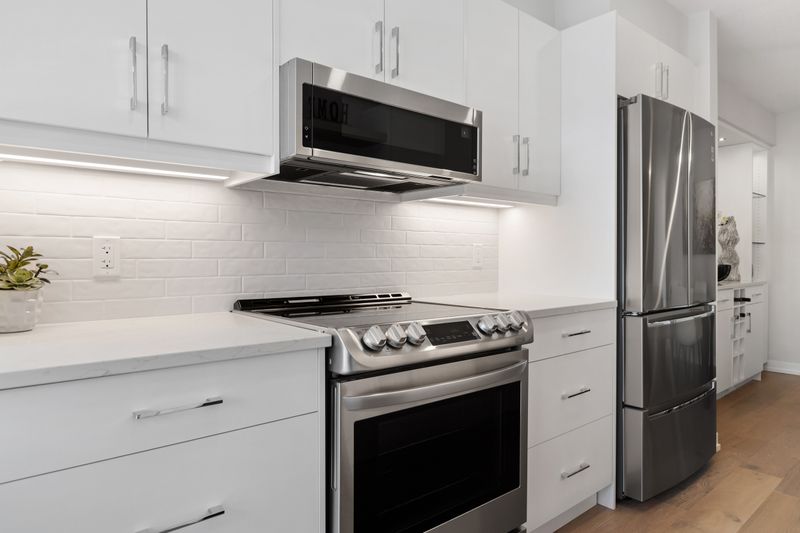
Heat from your range forces nearby refrigerators to work harder, potentially causing mechanical failures. Beyond energy waste, this arrangement creates a dangerous traffic pattern when multiple cooks navigate the kitchen.
Children grabbing snacks from the fridge risk burns when someone simultaneously uses the adjacent stove. Allow at least 15 inches of separation between these appliances for safety and efficiency.
6. Using Slippery Floor Materials

Highly polished stone or ceramic tiles become treacherous skating rinks when wet. One spilled glass of water transforms your beautiful floor into an emergency room visit waiting to happen.
Look for flooring with texture, slip-resistant ratings, or matte finishes. Cork, rubber, and certain vinyl options provide both style and stability underfoot, even when dealing with inevitable kitchen spills.
7. Installing Cabinets Without Anti-Tip Brackets
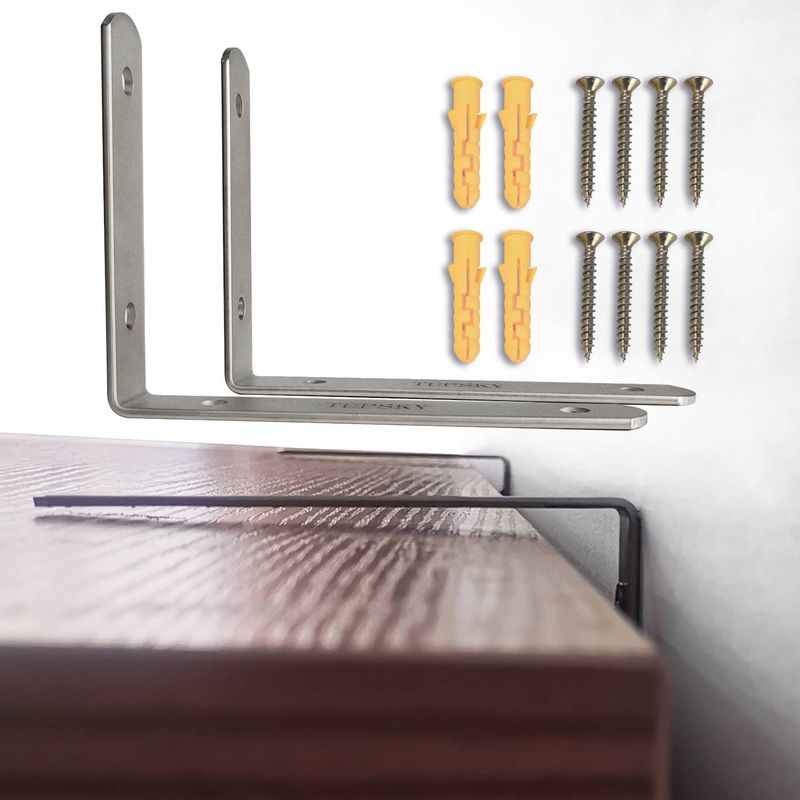
Imagine pulling open a fully loaded upper cabinet only to have it detach from the wall! Unsecured cabinetry poses a crushing hazard that can cause severe injuries or worse.
Children climbing shelves for cookies or adults using open doors for balance can trigger catastrophic failures. Proper installation includes heavy-duty mounting hardware and anti-tip brackets that prevent cabinets from pulling away from walls.
8. Mounting Shelves Above the Stove
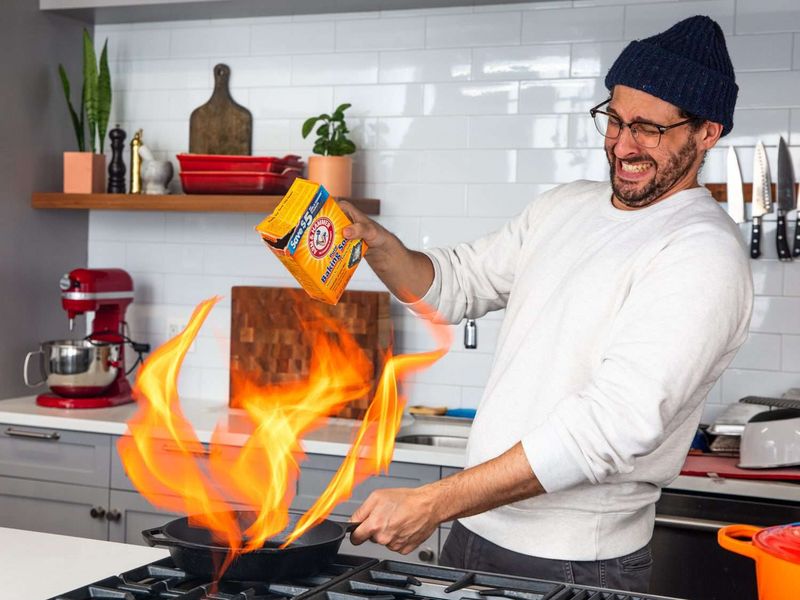
Reaching over active burners for spices or cookbooks invites sleeve fires and painful burns. Heat damage gradually weakens shelf supports, creating the perfect scenario for a catastrophic collapse during cooking.
Open shelving directly above cooking zones also exposes items to grease buildup and heat damage. Keep the space above your range clear or install proper ventilation hoods instead of storage.
9. No Fire-Resistant Materials Near Heat Zones
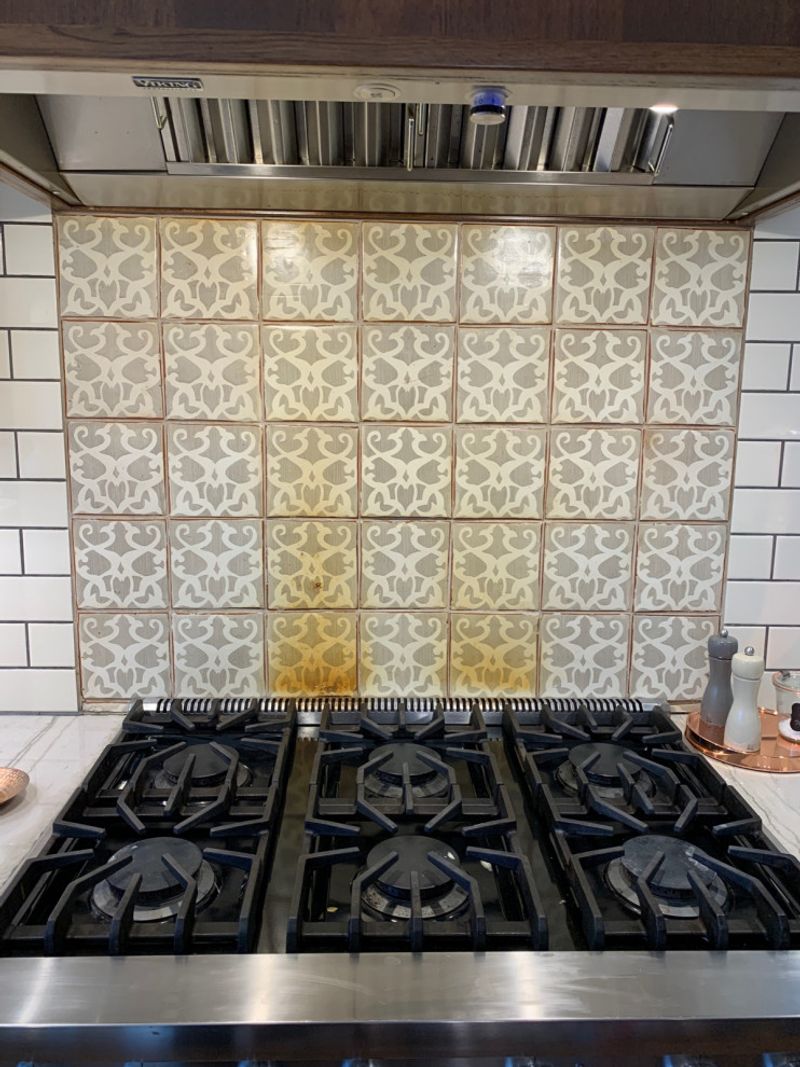
Wood paneling or flammable backsplash materials behind stovetops create silent fire hazards in your kitchen. Cooking oil splatters can ignite when they land on combustible surfaces near open flames.
Protect heat-adjacent areas with non-combustible materials like ceramic tile, metal, or specially rated fire-resistant panels. Even a small cooking fire can quickly spread when surrounded by the wrong materials.
10. Misplacing the Microwave Height
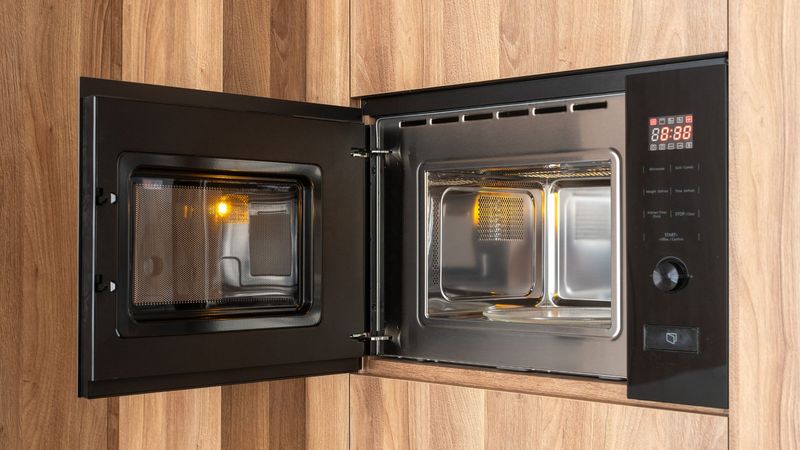
Mounting microwaves at eye level might seem convenient until you’re removing scalding soup. Hot contents can easily spill onto faces or down arms when lifted from overhead heights.
Children and shorter adults face particular risks when using high-mounted microwaves. The safest placement keeps the microwave’s bottom no higher than 4-5 inches above your elbow height to prevent dangerous spills.
11. Not Installing GFCI Outlets Near Water Sources
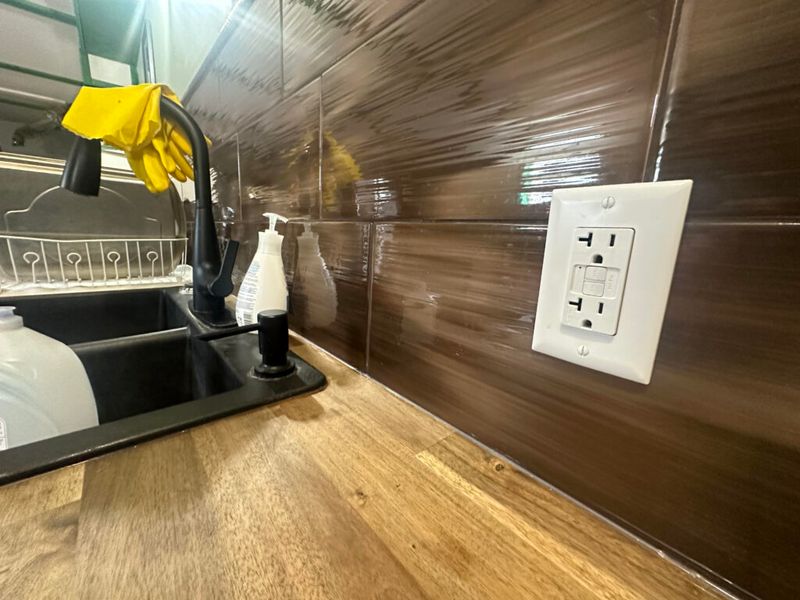
Standard electrical outlets near sinks create shock hazards that could prove fatal. Water and electricity form a deadly combination when splashes reach plugged-in appliances.
Ground Fault Circuit Interrupter outlets automatically cut power when they detect current leakage. Building codes require GFCI protection near water sources, but older kitchens often lack this crucial safety feature that costs just a few dollars more than standard outlets.
12. Blocking Airflow Around Appliances

Refrigerators need breathing room to function safely and efficiently. When pushed flush against walls or enclosed in tight cabinetry, cooling coils can’t disperse heat properly.
Overheating appliances not only waste energy but can cause component failures or even fires. Leave at least 2-3 inches of clearance around refrigerators and check manufacturer specifications for built-in appliances to ensure proper ventilation.
13. Cluttering the Countertops with Decor

Fancy knife blocks and decorative items near cooking zones create obstacles when you’re handling hot pans. One bumped candle or knocked-over oil bottle can quickly escalate into a dangerous situation.
Keep work areas clear of non-essential items, especially near the stove. A minimalist approach to counter decor reduces the chance of accidents and gives you crucial space for safe food preparation.
14. Poorly Placed Trash and Recycling Zones

Crossing the kitchen with dripping food waste creates slip hazards and hygiene issues. When trash bins are inconveniently located, people tend to let garbage accumulate on counters instead.
Ideally, position waste receptacles near food prep areas for immediate disposal. Pull-out bins beneath cutting boards or near sinks minimize drips while keeping bacterial contamination contained to designated zones.
15. No Lighting Inside Deep Drawers or Cabinets
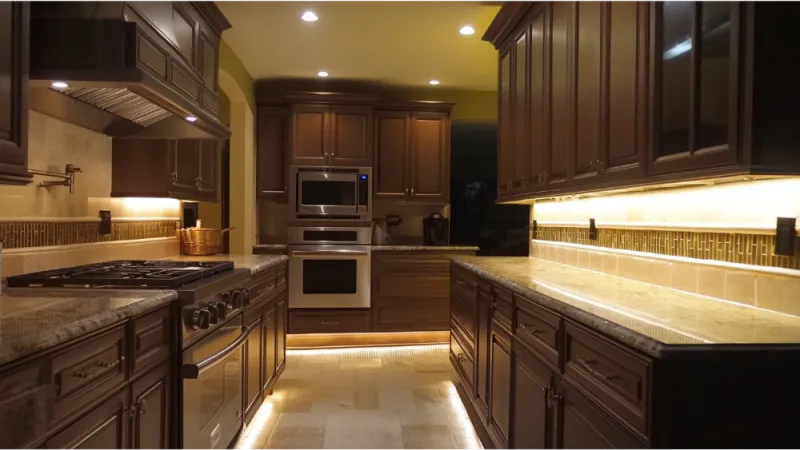
Blindly reaching into dark cabinets for sharp objects or glass items invites cuts and injuries. Without proper illumination, it’s easy to grab knife blades instead of handles or knock over breakable items.
Motion-activated drawer lights cost little but dramatically improve safety. Battery-operated options make installation simple even in existing cabinetry, eliminating the need to fumble dangerously in shadowy storage spaces.
16. Using Open Shelves Too Close to Sinks
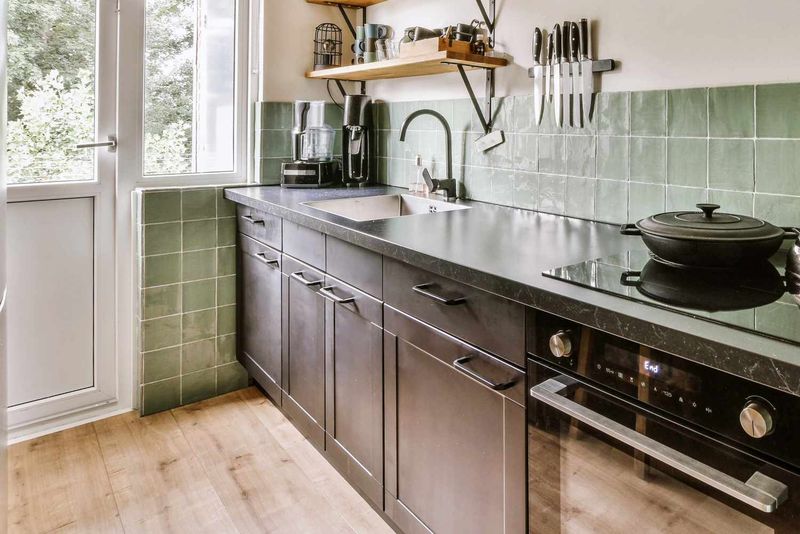
Water splashes combined with porous materials create perfect conditions for hidden mold growth. Books, wooden items, and electronics stored on open shelving near water sources face constant moisture exposure.
Beyond damage to your belongings, developing mold can trigger respiratory issues. Keep a splash-free zone of at least 2 feet around sinks, or use closed cabinetry with water-resistant finishes in these high-humidity areas.
17. Installing Low-Quality Cabinet Hinges

Bargain hardware fails faster, creating pinch points and unexpected cabinet drops. Imagine a heavy door suddenly detaching while you’re reaching inside – the potential for injury is significant.
Quality hinges with soft-close mechanisms prevent slamming that can crush fingers. Spending slightly more on hardware provides years of safer operation while protecting both your cabinetry investment and your family’s hands.
18. Forgetting Toe-Kick Space Below Cabinets

Standing flush against cabinets forces awkward leaning postures that strain your back and increase fall risks. Without toe-kick recesses, you must stand further from counters, encouraging overreaching for items.
Proper ergonomic design includes 3-4 inch recessed spaces at floor level. This seemingly small detail allows you to stand closer to work surfaces safely, reducing strain and improving balance during extended food preparation sessions.
19. Choosing High-Gloss Surfaces That Show Every Smudge

Constantly wiping fingerprints from shiny surfaces leads to excessive cleaning chemical use around food. High-gloss finishes also create distracting reflections that can obscure knife positions or spills on countertops.
Matte or satin finishes provide elegant alternatives that hide minor smudges between cleanings. Reducing glare improves visibility of potential hazards while creating a more relaxed visual environment for safer food preparation.
20. Overloading Floating Shelves Without Support
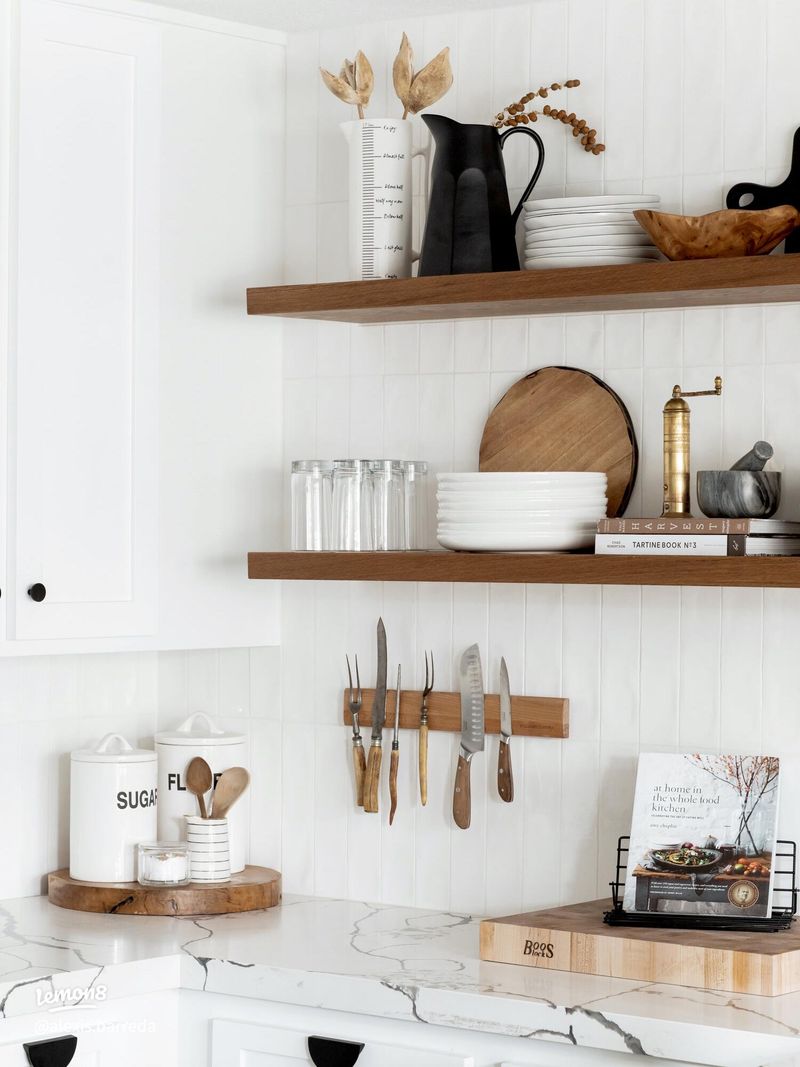
Stylish floating shelves look stunning until they collapse under the weight of your dishes! Many homeowners install decorative shelving without considering load capacity or proper mounting techniques.
Heavy items like cast iron cookware or stoneware dish sets require substantial hidden brackets or reinforced mounting. Calculate weight limits before loading shelves, and use studs rather than drywall anchors for anything supporting more than a few pounds.

